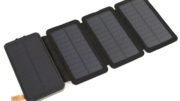In the last several months, we’ve gotten a look at the new contenders in the virtual reality arena. Apple, as usual, thinks you’ll shell out an insane amount of money for something that feels innately cool. Meta (formerly Facebook and Oculus) continue to improve their Quest series headsets with higher quality and faster processors. There’s only one question to really ask: is it going to take this time?
Virtual reality isn’t new
The idea of putting on a headset with a pair of screens that make you feel like you’re in another reality isn’t new. It was all the rage in the 1990s. At the time, the technology was definitely not ready. Users experienced nausea from slow-reacting headsets and the image quality was, well about what you’d expect from back then. It may have been virtual, but it certainly wasn’t anything even close to reality.
Fast forward to a decade or so ago when a company called Oculus created a headset fast enough that you didn’t throw up from it. The quality of the images was still 2010’s era smartphone-like, but that was enough for live video and reasonably convincing games. That tech is what Meta is still using today, although they continue to make it better
At the same time, Google was testing a new product called Glass which, rather than creating virtual reality, created what they called “augmented reality.” You didn’t replace your current view; rather stuff was overlaid onto it and that stuff was supposed to be useful. Google Glass failed spectacularly because everyone knew it could be used to covertly record stuff and no one wanted to be around that. But, the idea of augmented reality continued to be a good one. It’s used today as well, with people using their phones to overlay directions and other things into their views.
The lines have blurred as the graphics have sharpened
Today’s headsets blur the line between virtual and augmented. Apple’s Vision Pro uses creepy monitors to make it look like their headset is transparent. They literally take live video of your eyes and overlay it. The effect is, honestly, a little goofy. Meta’s Quest 3 doesn’t bother with that. Both headsets can give you a color, 3D view of the world around you in real time and overlay content onto it. So in a sense, both headsets offer virtual as well as augmented reality.
Still, the real question remains: will anyone actually want these devices? Apple getting into the market is a good sign. The company’s reputation for jumping into the market at just the right time is legendary. Consider that smartphones of some sort had been around for about 15 years before the iPhone, but few took them seriously until the iPhone itself came onto the scene. That’s the way Apple does things. They come into the market with a premium priced product that makes everything else seem like a toy. It’s just their style, and it’s what they plan on doing when the Vision Pro reaches the market sometime in 2024. Remember, Apple has convinced people that they want (and should pay for) $1,500 phones. It was just a decade ago that most folks would balk at a phone costing more than $200. They just might succeed in making people feel like $3,500 for a headset is a good investment.
What will become of Meta?
Meta’s Quest 3 is a much more sensible competitor. With a price that should set right around the mid-$500s, it’s an easier sell. Early reviews say it’s better, faster, and more realistic than the Quest 2, the original Quest, or the Oculus Rift. But will it lose to Apple just because, well, it’s not Apple? The one thing that Meta’s headsets have never had was coolness. The tech inside is cool, but putting something the size (and weight) of a brick on your face is most decidedly not cool. Meta will have to deal with that in the coming years if they want to compete.
My (guaranteed to be wrong) prediction
If you comb through this blog, you’ll find that when I make a big prediction, it’s wrong about 60% of the time. That’s right, it’s actually wise to bet against me. But, it’s usually because my predictions are SO big that you’d need a lot of things to go right before they come true. Still, I keep predicting and here I go again.
I don’t think the current contenders in the VR marketplace are going to rock the world. They will just be footnotes in the future of VR and AR. I think that augmented reality is going to take over, but not until it’s as seamless as possible. I imagine transparent screens baked into cars so critical information can be relayed. This is already possible but it’s just too expensive, especially when you consider replacement costs. I think some sort of headset or glasses will eventually become the norm, but not until it’s both light and relatively cheap. Those are two things we don’t have at all today.
I think that by 2035, we’ll see a lot of augmented reality. It will probably be more common than actual reality. But, by then I’ll probably be sitting on the front porch shaking my fist at the neighborhood kids, so I won’t terribly care.





